Aleki Blue is a tattoo artist with a medical background and a personalized approach to every body — every line, every curve, every form. Originally from Moscow, the 25-year-old artist is now actively working across the United States, developing a unique visual language that blends micro-realism, geometry, and symbolism.
Aleki describes the body as a “living landscape” and sees tattooing as a subtle form of interaction with it. His work never feels like something placed on top of the skin — it becomes part of the person, an extension of their movement, emotions, and inner story.
For Aleki, this is the essence of the craft: not just to create a tattoo, but to create something that could never be repeated on anyone else.
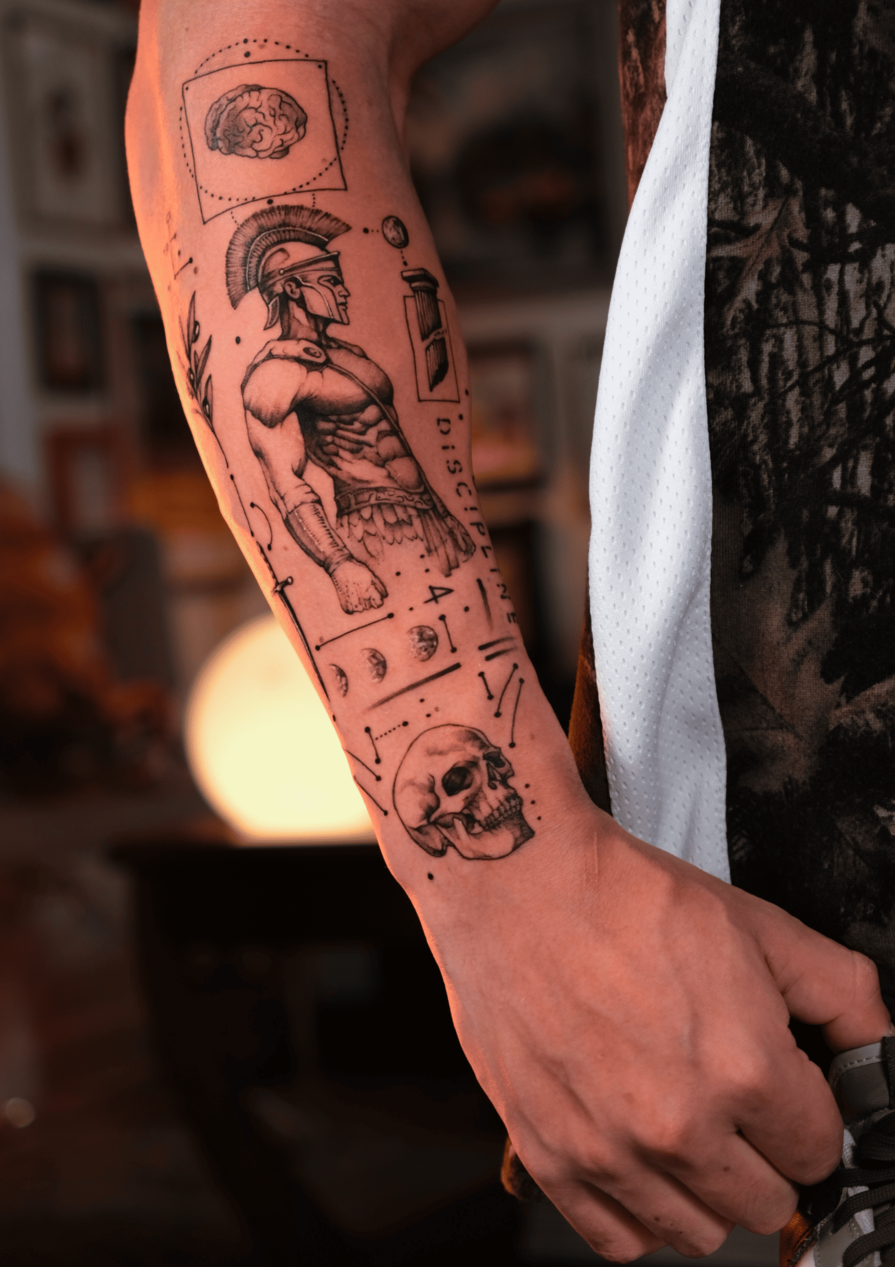
— How and when did your journey into tattooing begin? What inspired you to pursue this path?
— It started when I was 21. A friend gave me a small machine for permanent makeup—not even a proper tattoo machine. I tried it out just out of curiosity, but pretty quickly I realized this was something I wanted to explore seriously. I started practicing, studying how tattooing works, and trying to understand the skin, the technique, and the overall process. From there, I just kept going deeper and deeper into the craft, and it became something I couldn’t imagine not doing.
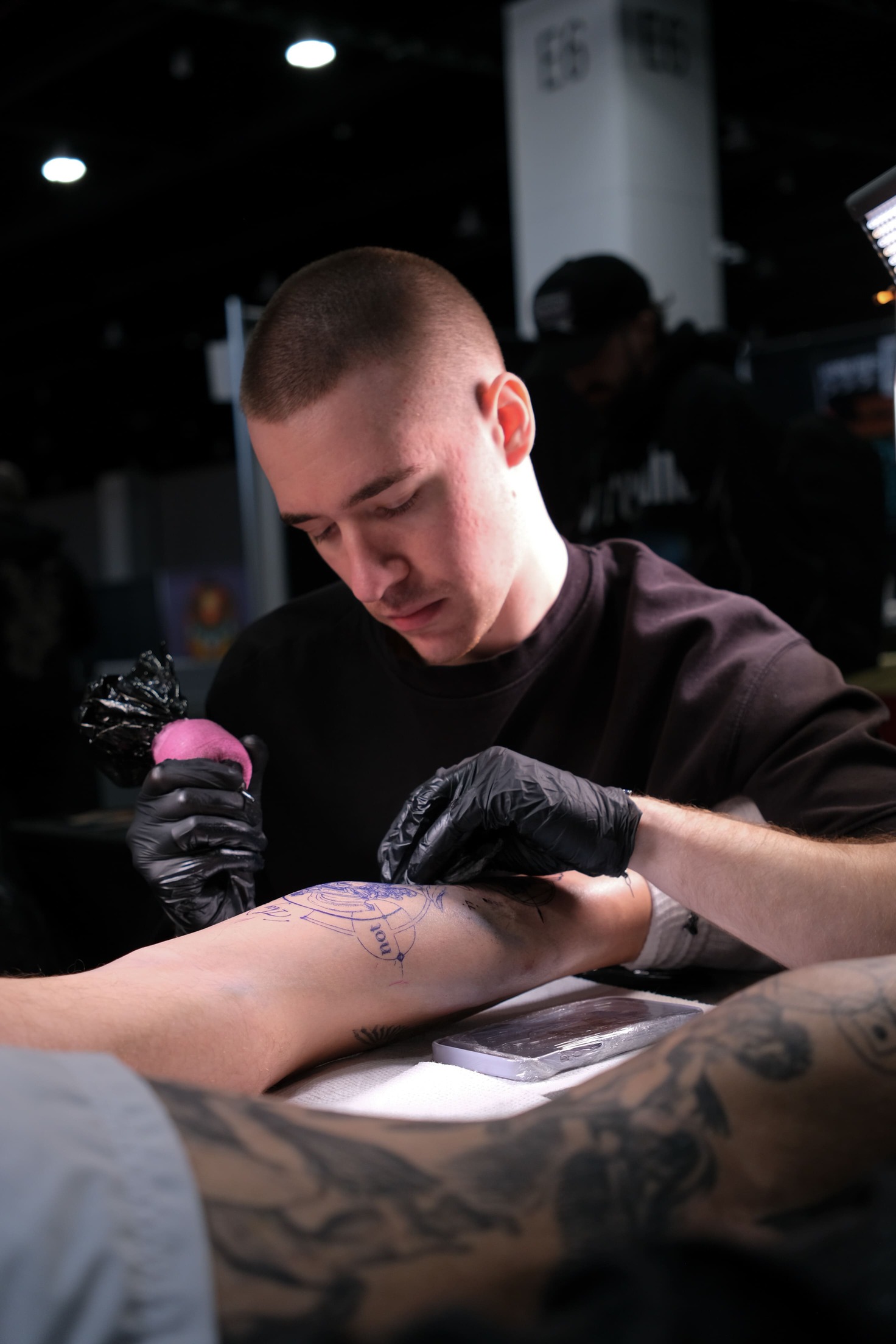
— Where are you currently working? How can people book an appointment with you?
— Right now, I’m traveling across the United States, working in different cities almost every month. I really enjoy seeing new places, meeting new people, and learning from every experience. I feel lucky that tattooing gives me the freedom to keep moving, exploring, and connecting with people on such a personal level through my work.
The best way to book with me is by sending a DM on Instagram @aleki_blue. That’s where we can start the conversation, discuss your idea, placement, design, and everything else needed to move forward with the appointment.

— You’ve mentioned in your social media that you have a medical background. Has that been helpful in your work as a tattoo artist?
—Yes, I studied pharmaceutical sciences before I started tattooing, and it definitely gave me a background that helps me understand anatomy better. It made me more aware of how the body works—not just the surface of the skin, but the structure underneath. That really influences how I build my designs, how I place them on the body, and how I work with the natural flow of each person’s form.
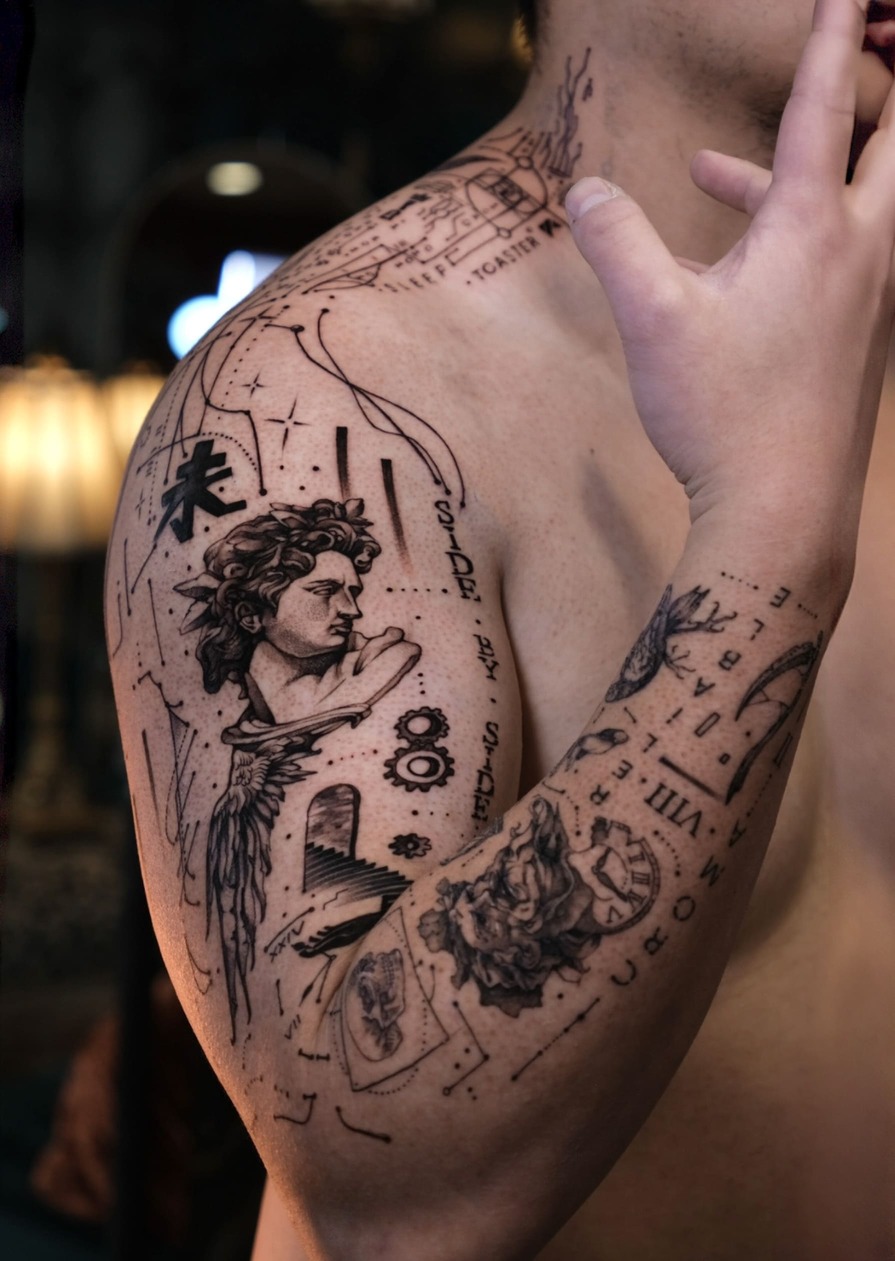
— How would you describe your style? How did it evolve? Are you open to experimenting stylistically, or do you stick to your visual identity?
—I work in the style of micro-realism with elements of geometry and symbolism. I like building compositions where every detail has meaning—where realistic textures and shapes flow together with clean, structured elements. I always try to balance emotion and structure in the design, so the tattoo feels personal but also looks like it belongs on the body.
I’m always open to exploring and trying new ideas, but I like to stay within my visual language. I believe that when you know your strengths and your artistic identity, the work becomes more honest and recognizable. That’s what I try to focus on.
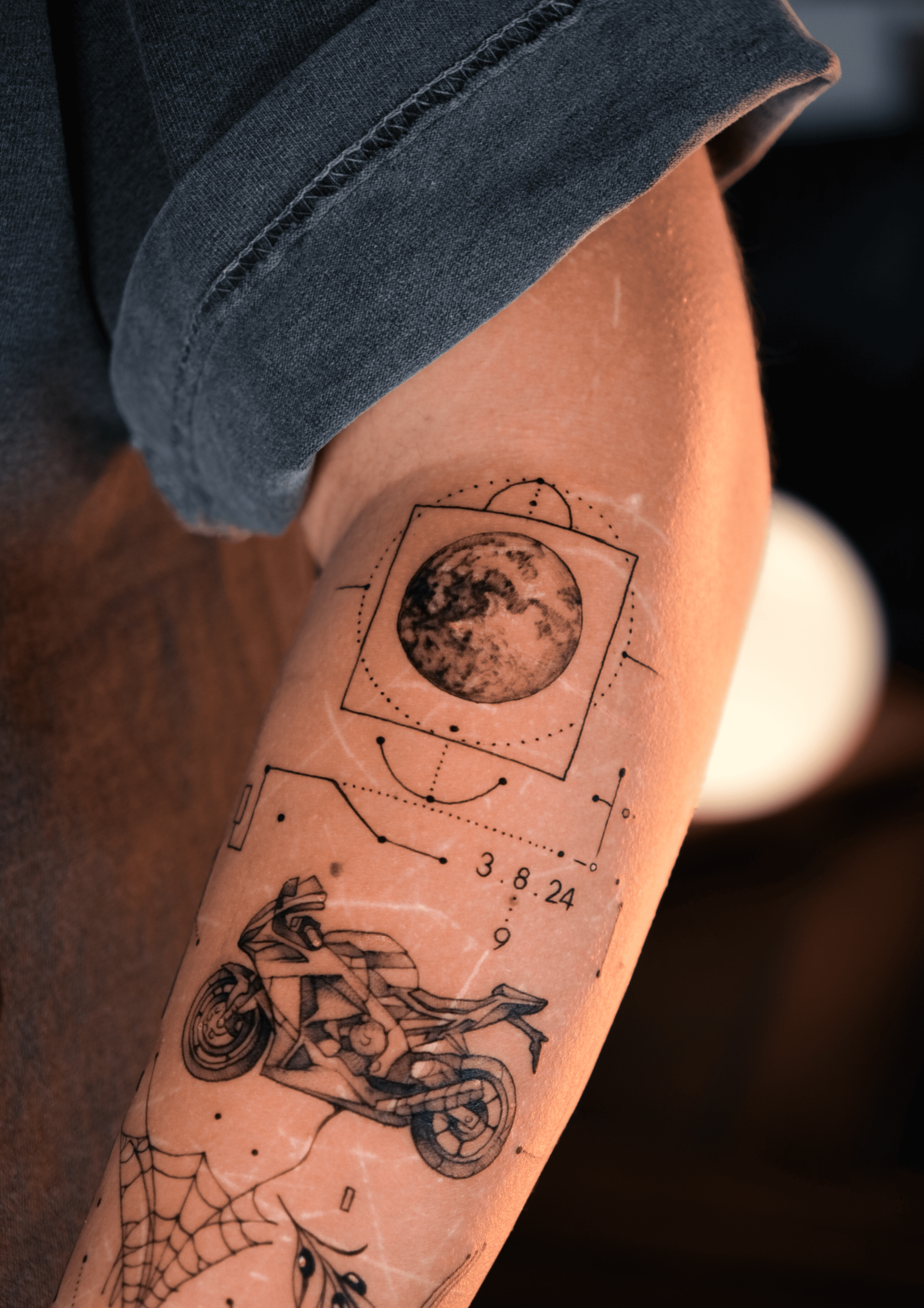
— What techniques do you prefer to use in your work?
I use a mix of techniques in my work, combining fine line, whip shading, and soft shading to create depth and texture without overworking the skin. I like to balance clean, controlled linework with smooth gradients, building the tattoo gradually, layer by layer. I also pay a lot of attention to flow and placement—making sure the design feels natural on the body and works with its shape, not against it.
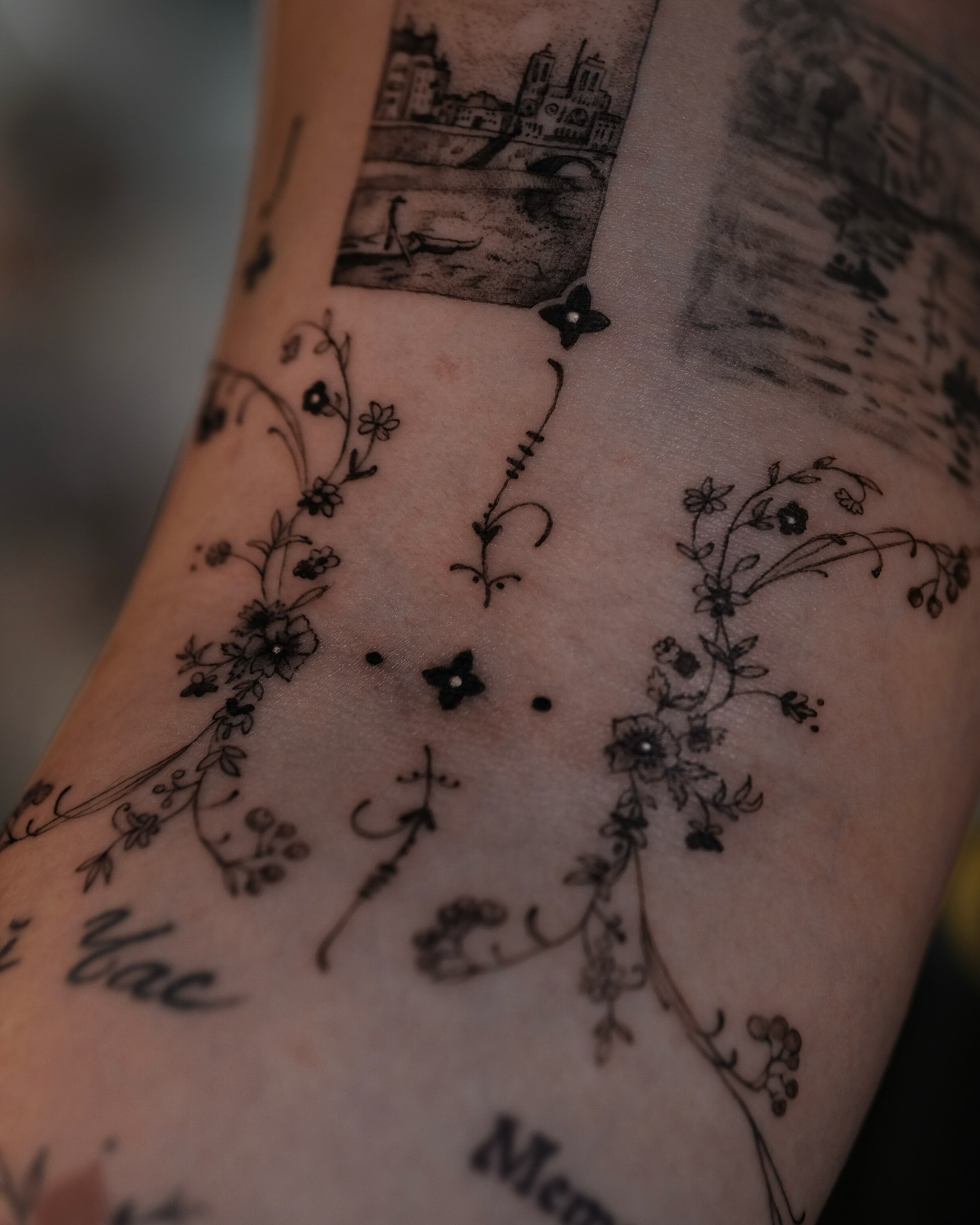
— You call the body a “living landscape.” How do you determine the ideal placement for a tattoo?
— For me, the body is not just a surface to fill with images—it’s a living, moving landscape with its own shapes, lines, and flow. Every person’s body is different. The way their muscles move, the way the skin stretches, the natural curves and angles—they all create a rhythm. And I try to build my designs in a way that feels like they belong to that rhythm.
When I work on the design, I always think about how it will live on the body—not just how it looks on paper. I pay attention to how the body moves, how the lines of the design can follow the natural shapes of the client’s form. I believe the best tattoos feel like they belong to the body, like they move with the person and become part of them, not something just placed on top.
That’s why I always ask for photos of the area in advance, so I can plan the design specifically for that space. It’s never about forcing an idea to fit—it’s about making the idea feel like it naturally flows with the client’s body.
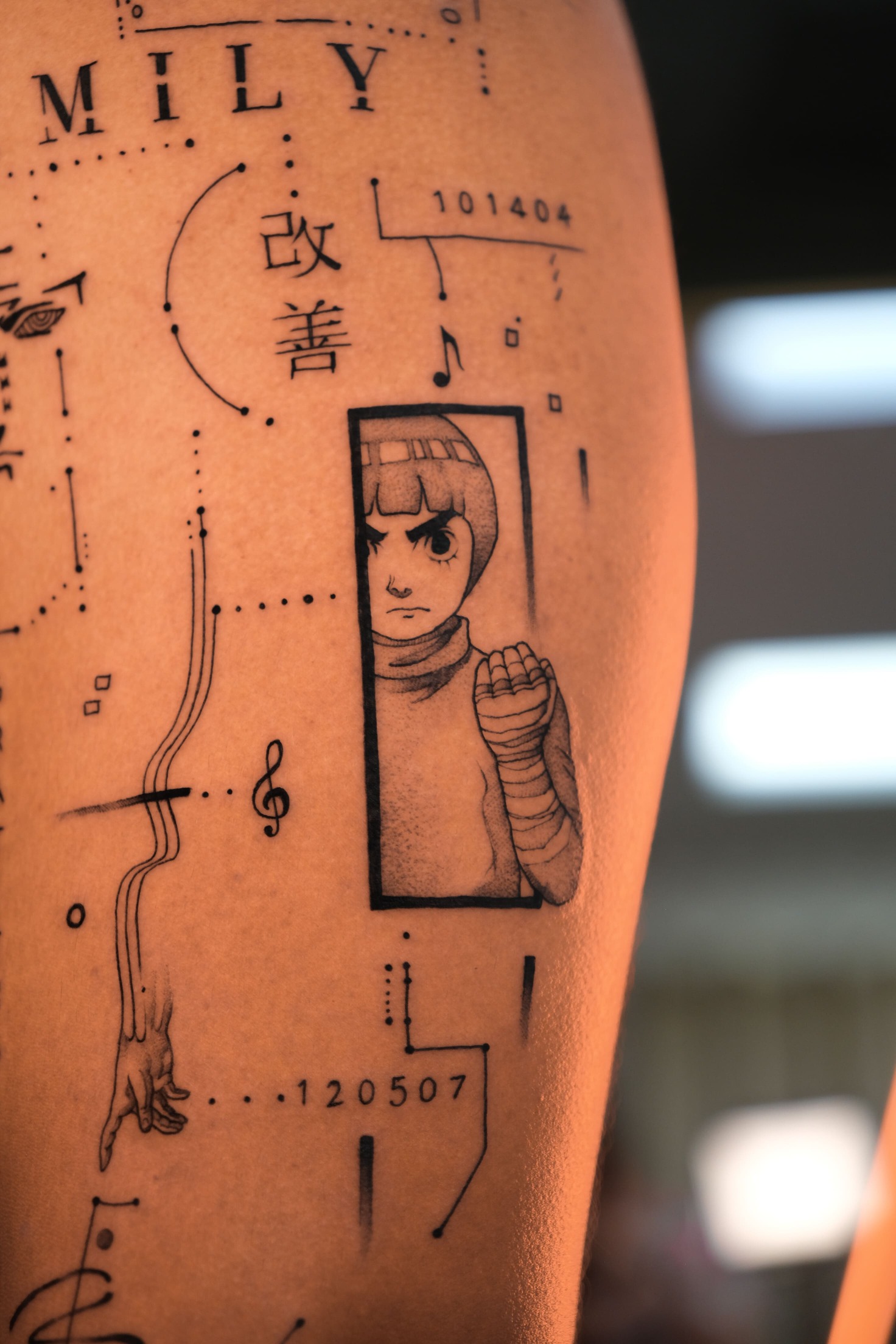
— How do you approach symbolism? Do you use established images, or do you create your own visual language?
— I believe symbolism is very personal. Sometimes people come with ideas that already have established meanings—like snakes, flowers, or certain geometric shapes. But for me, it’s not really about using “standard” symbols just because they are recognizable. It’s about what those images mean to the specific person sitting in front of me.
I always try to dig a little deeper—ask why they connect with that image, what it represents for them. That’s usually where the real meaning comes from, not from the general definition you might find online.
I also like building my own visual language—mixing realism with geometric or abstract elements that feel personal to the composition and the client. I think that’s what makes the tattoo unique. It’s not just about using existing symbols, but about creating something that feels like their own version of that symbol—something they can connect with on a deeper level.
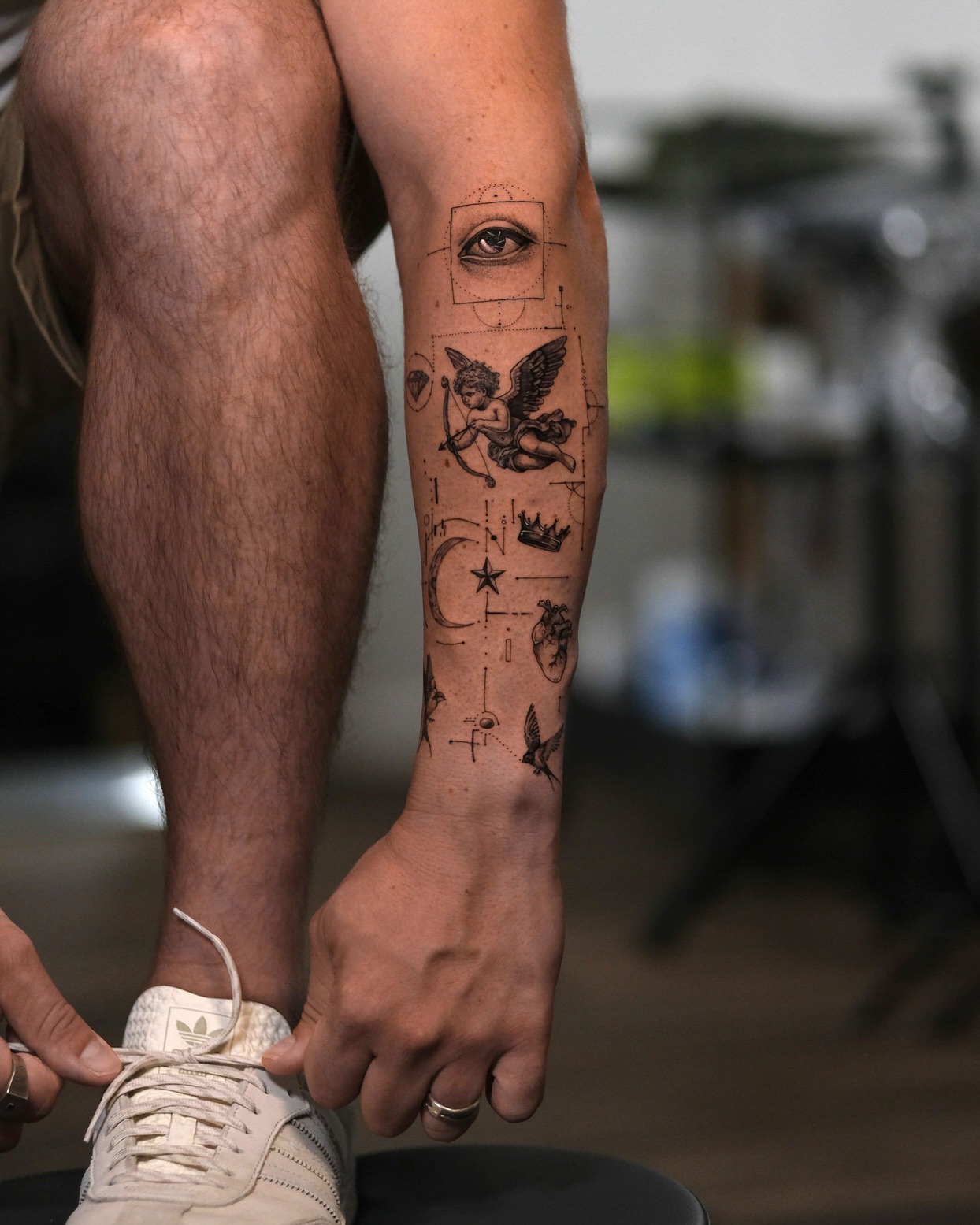
— Your portfolio shows a strong focus on anatomy and the structure of the body. What inspires you visually?
— I’ve always been drawn to structure—especially in the human body. It already has its own shapes, flow, and rhythm, and I like building designs that work with that, not against it.
I get inspired by the things I notice around me—shapes, light, contrast, movement. Sometimes it’s something really simple, like the way shadows fall or how certain lines interact with space. These little details often end up influencing how I build compositions on the body.
In the end, it’s always about making the tattoo feel like it belongs to the person—not something that just sits on top, but something that becomes part of their movement and presence.

— How do you work with references—do you use existing images or create your own from scratch?
— I usually start with the references my clients share with me. It helps me understand their idea and the overall direction they have in mind. But I never copy other people’s tattoos or use references as they are. I always rework them and build my own version to make sure the final piece feels original and personal.
I also create a lot of designs completely from scratch, especially when it’s something very specific or custom. I like developing the idea fully for the person—not just in terms of meaning, but also in how it fits their body and how it flows with their shape. Everything starts with the idea, and I build the design around it to make it feel personal and alive.
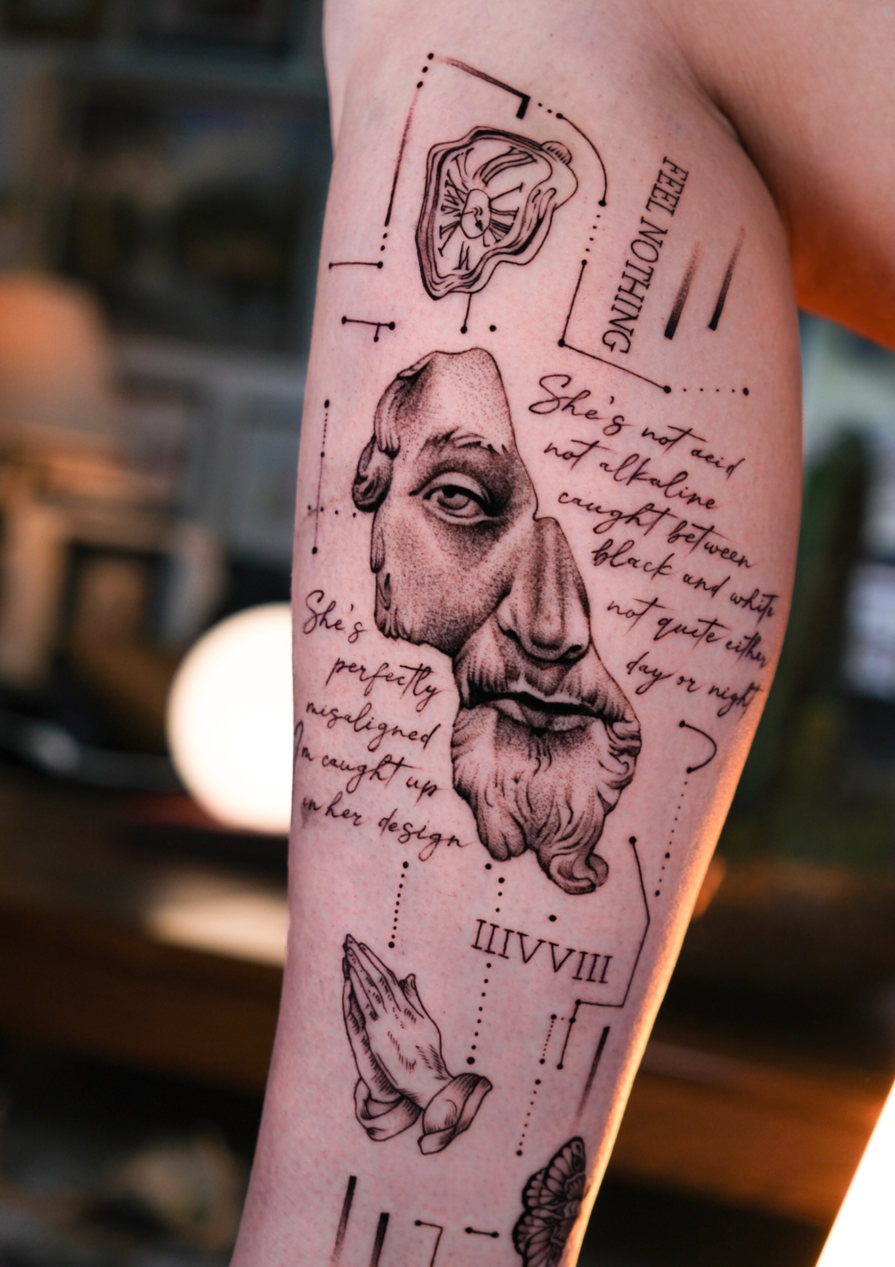
— How do you handle the emotional requests of your clients? What helps you get to the heart of what they’re asking for?
—Many of the people who come to me aren’t just looking for a tattoo—they’re carrying something personal. It could be loss, heartbreak, a memory, a transition, or even the happiest moment in their life that they want to capture. Sometimes they don’t have a clear image in mind. They just know they want to carry that moment with them, to mark it on their skin.
For me, it always starts with listening. I try to understand the story behind the idea—not just what they want on the surface, but what it really means to them. I ask questions that go deeper: Why this symbol? Why now? Sometimes the conversation shifts completely from what they originally thought they wanted. And that’s a good thing. It means we’re getting closer to the heart of it.

I also pay attention to how people describe their emotions—how they talk about the meaning behind the tattoo. I try to translate that into the design. Sometimes it’s in the way the lines flow, the direction of the composition, or the balance between heavy and light elements. It’s not always about the symbol itself—it’s about how the whole piece feels when it’s placed on the body.
I’ve said before that I believe tattooing has a therapeutic side. When someone chooses to mark their body with something meaningful, it’s an act of reclaiming their story. I feel lucky to be part of that process—not just as someone who creates the image, but as someone who helps them bring it to life in a way that feels personal and real.
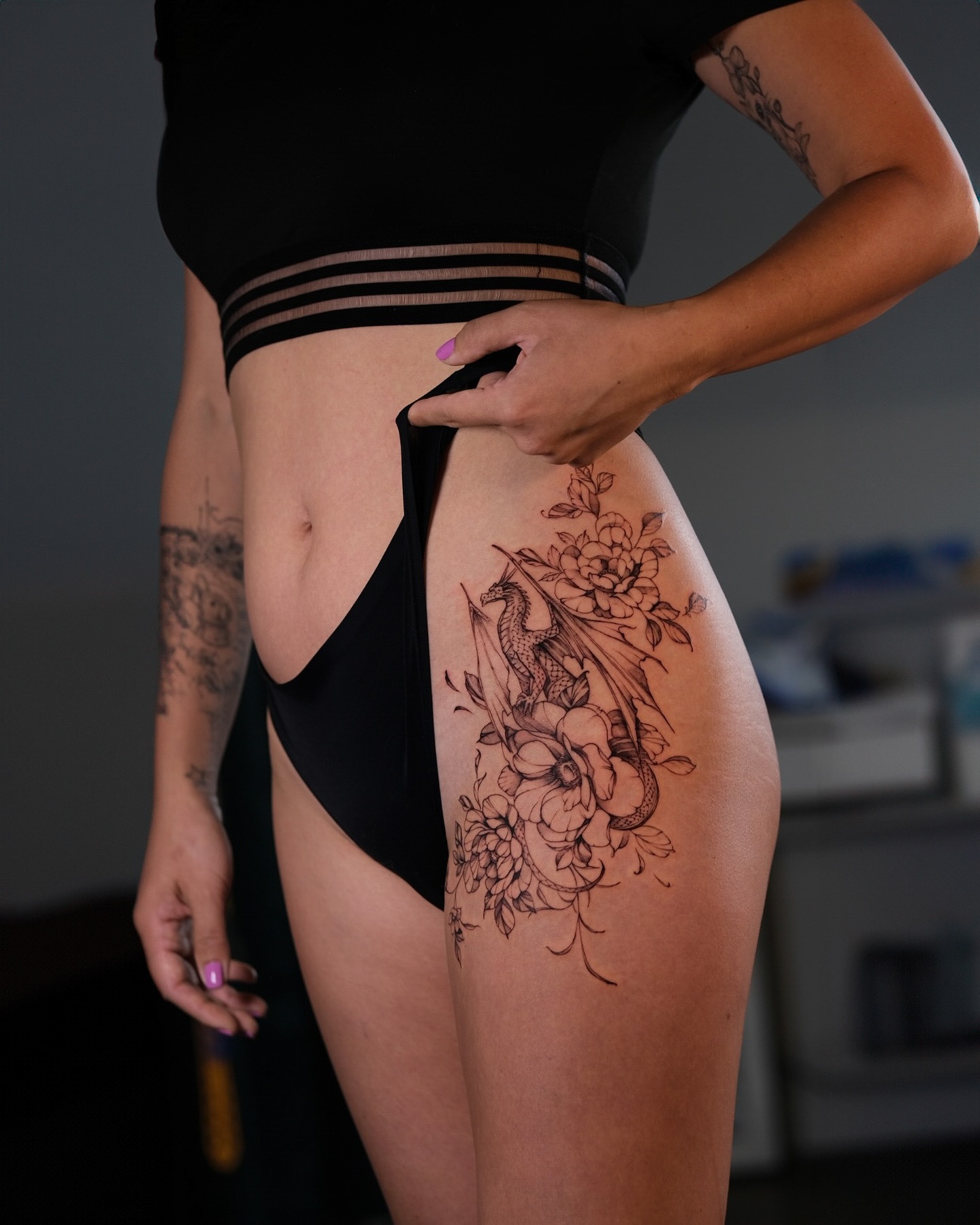
— What themes or emotions are you most interested in exploring through your work?
— Honestly, I’m not focused on just one theme or emotion. What really interests me is that every story is different—and every person lives through it in their own way. Two people can bring the same idea, but the way they connect to it and the meaning behind it is always personal. I like the challenge of translating that into something that feels unique to them.
I’m also always curious about things I haven’t done before. New ideas, new ways of looking at familiar subjects—that’s what keeps the work interesting for me. I like when a project pushes me to think differently or build something I haven’t created yet. That’s when the work feels the most alive.
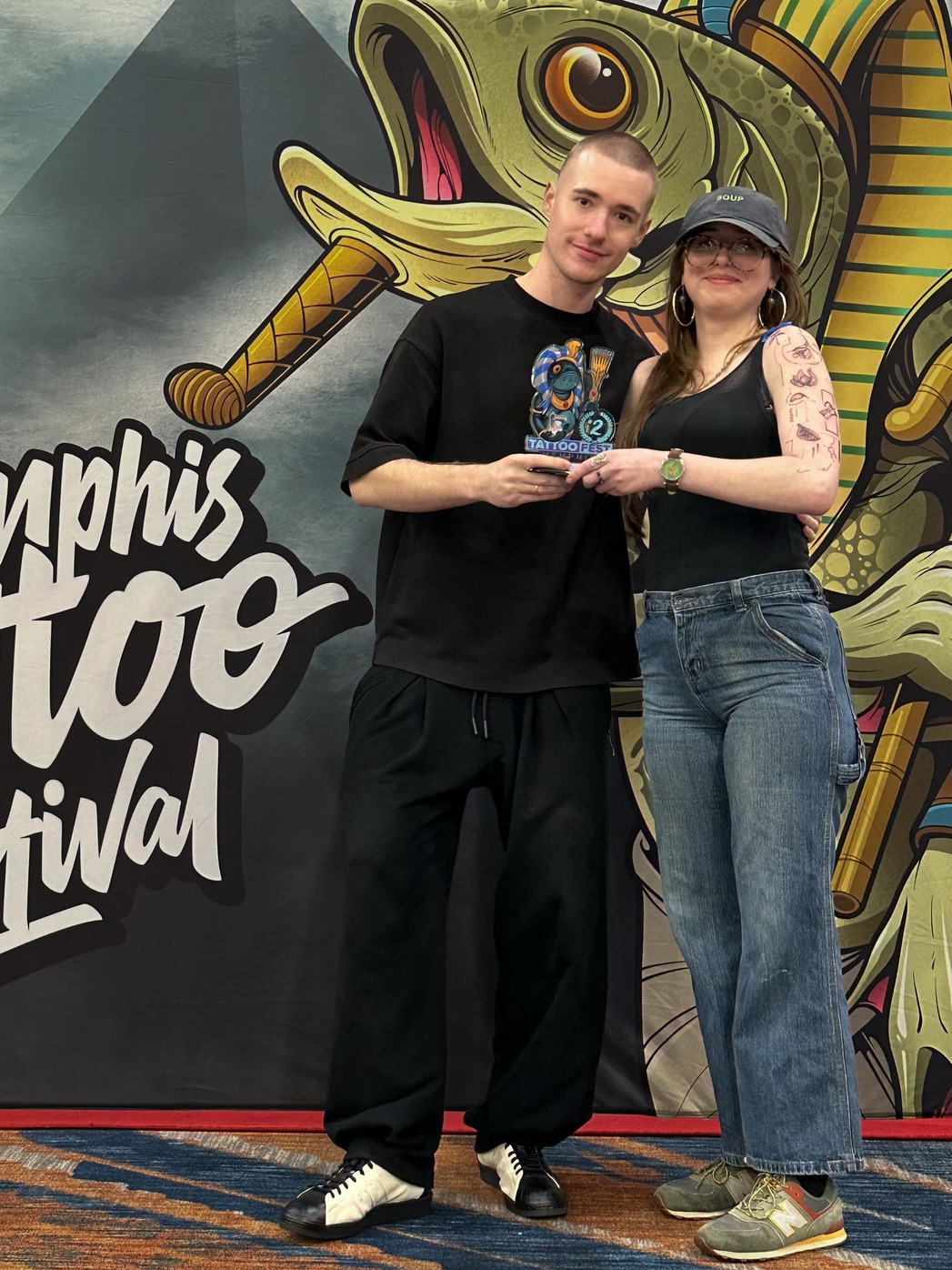
— Are there any projects that you consider especially meaningful in your career as an artist?
— The most meaningful projects for me are the ones that push me to grow—whether it’s creatively, technically, or personally. Sometimes it’s the client’s story that makes it meaningful—when someone comes with something really personal, and I get to help them turn that into something they can carry with them. Those moments stay with me because they feel bigger than just the tattoo itself.
But other times, it’s about what the project teaches me as an artist. Maybe it’s a design I’ve never done before, a new way of building the composition, or working with a placement that challenges me to think differently. Those projects are just as meaningful, because they show me how much I’ve grown—and remind me that there’s always more to learn.
So I’d say it’s both. It’s about the connection with the person, but it’s also about what I take from the process to keep moving forward.
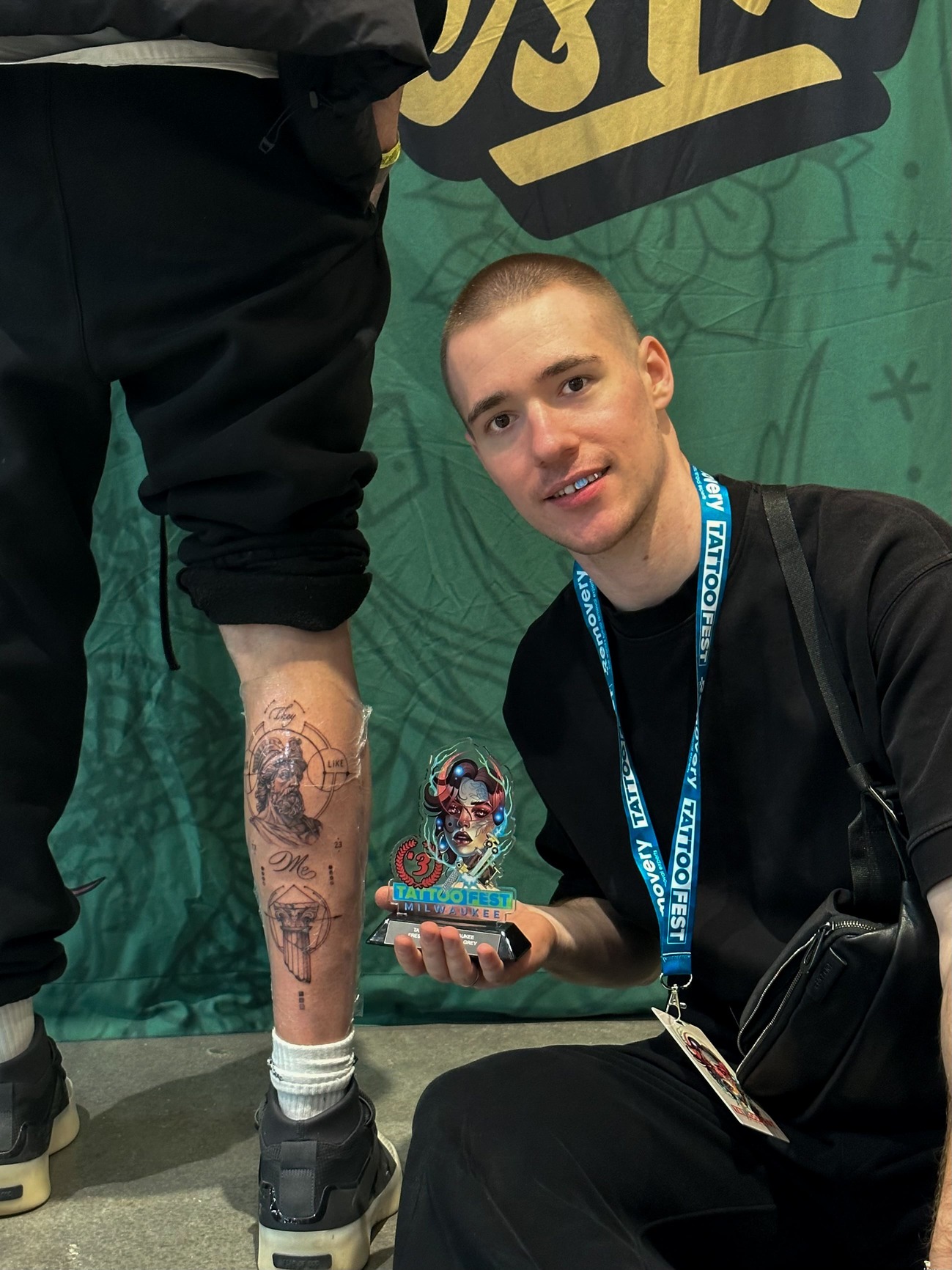
— Can you share your creative or professional plans for the upcoming year? Do you have any exhibitions, conventions, or other events lined up?
— Yes, this year is going to be busy, and I’m really looking forward to it. I have a lot of tattoo conventions lined up across the United States, which gives me the chance to meet new people and keep pushing my work in new directions.
Traveling and working in different cities is a big part of what keeps me inspired, so I plan to continue moving, learning, and growing through every event I take part in. I’m also focusing on building more personal projects—exploring new ideas, refining my style even further, and continuing to develop designs that feel honest and meaningful both for me and for the people who wear them.



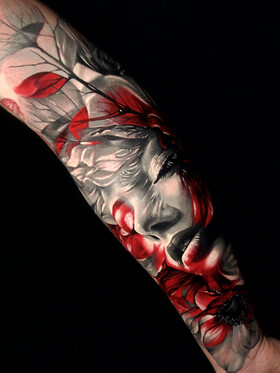
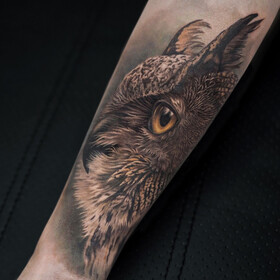

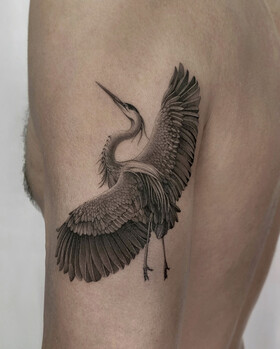

Comments (0)